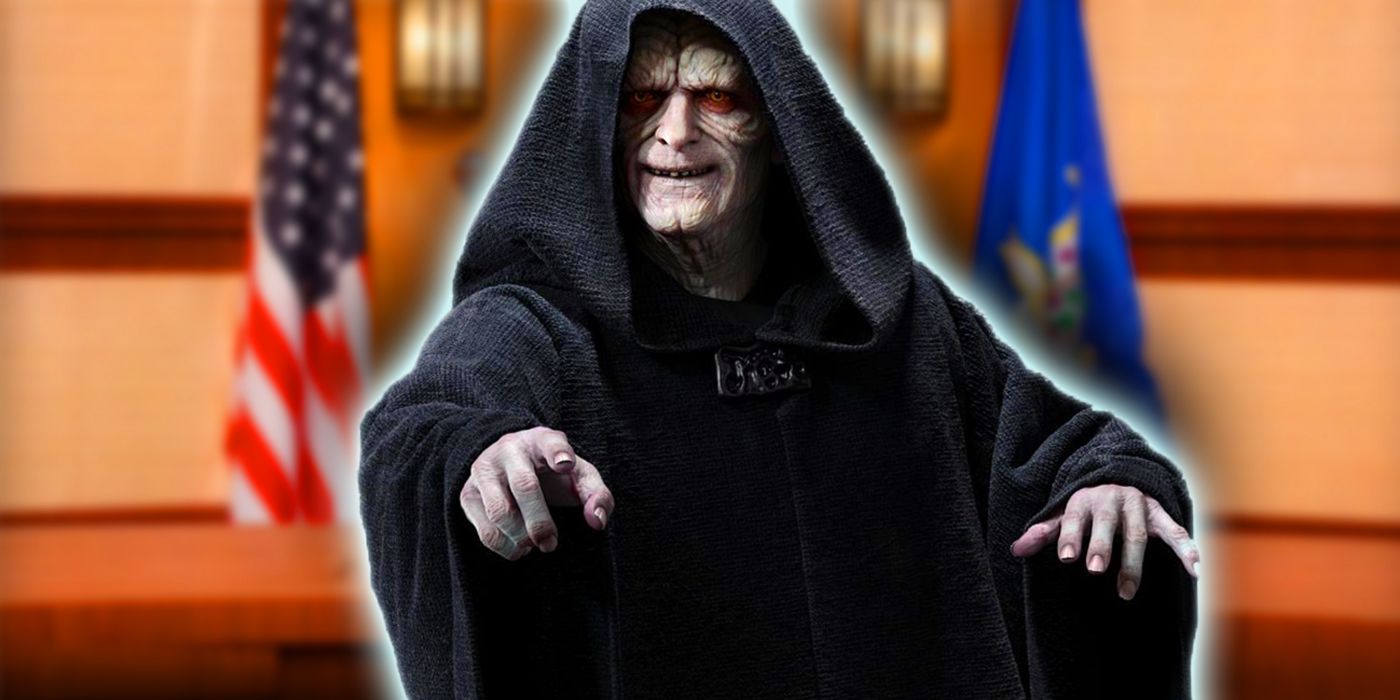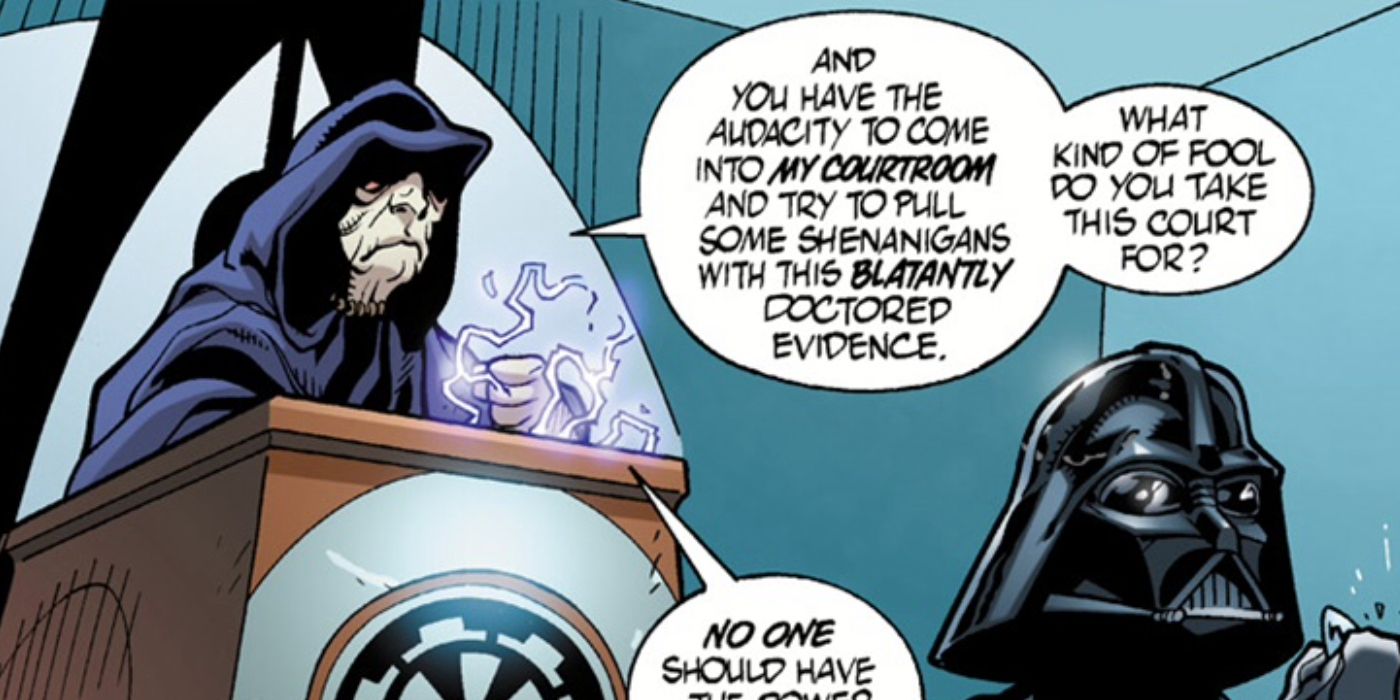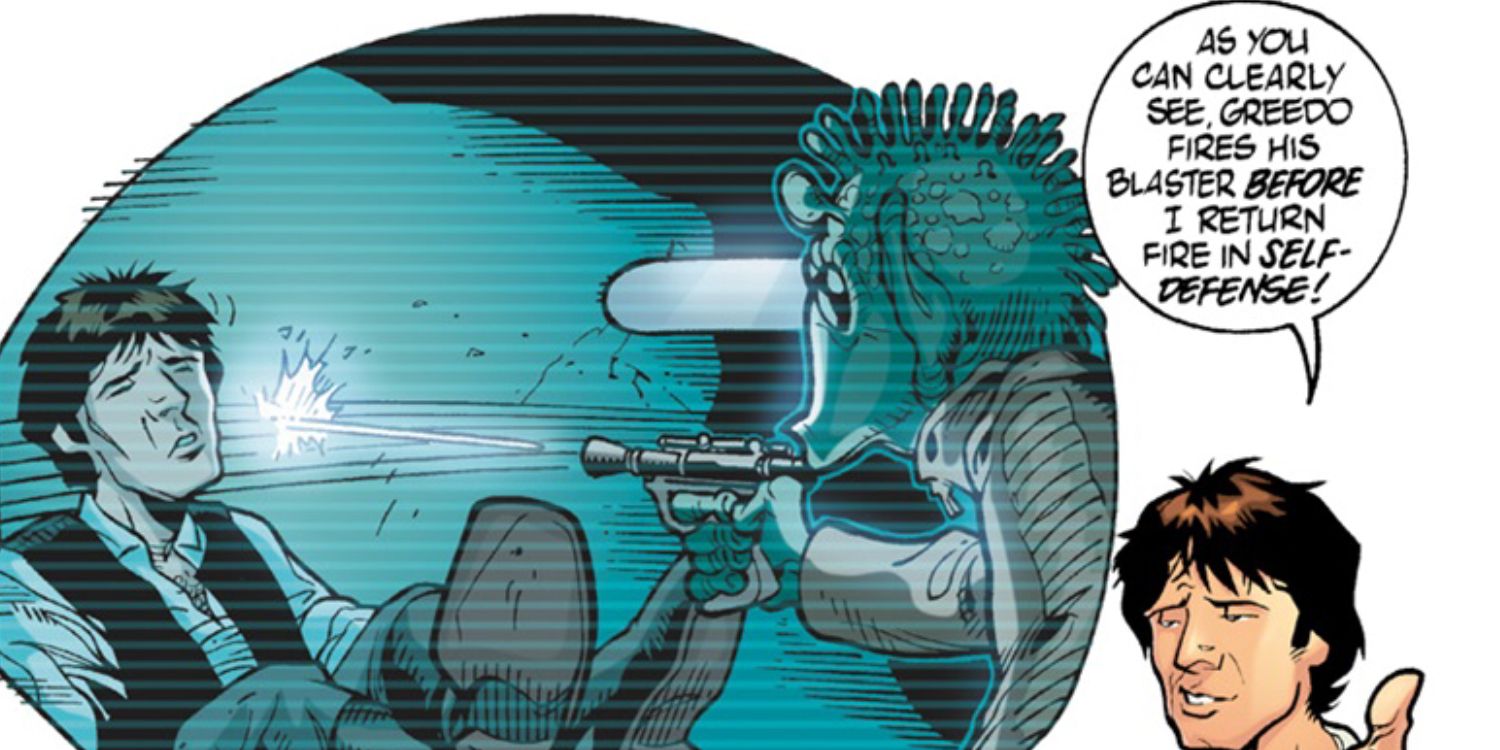Sheev Palpatine has had many different titles over the years in the Star Wars Galaxy. He started his political career as a Senator of Naboo before working his way through the ranks to become Supreme Chancellor and eventually the Emperor. Many fans probably don't realize there was a time when the Emperor also played the role of a judge. The non-canonical story "The Emperor's Court" by Jason Hall, Ramón Bachs, Raul Fernandez, Steve Dutro, and Dave Nestelle in 2002's Star Wars Tales #14 shows the Emperor exchanging his Sith robes for a new set of judicial robes.
The question of who shot first is one of the most highly contested debate in all of Star Wars lore. In "The Emperor's Court," Greedo's mother is distraught over the loss of her son and hires the best lawyer that money can buy, C-3PO. While it is common knowledge that the droid is fluent in over six million languages, he also claims to be familiar with over six million forms of litigation. Han Solo claims that Greedo shot first and he responded in self-defense. Threepio calls forward his witnesses and a gallery of different aliens that were seen in the Mos Eisley Cantina during A New Hope take the stand to tell what actually happened.
Solo objects to the witnesses' testimony, claiming that Lak Sivrak, the wolf-man was not even present during the events. This is a subtle jab at the 1997 special edition of A New Hope where Sivrak was replaced by Ketwol, who is a completely different species. The Emperor shows his true nature and throws out all of Threepio's witnesses' testimonies as he claims that he didn't understand a single word that any of the aliens said. Solo then brings forward his vital evidence, a holodisk showing the shooting.
The holo that Han presents shows the scene from the '97 special edition. This scene had been altered from the original version of A New Hope to clearly show that Greedo shot first. Of course, this evidence gets thrown out as well. Palpatine is outraged over Solo bringing forward doctored evidence and claims that only he can rewrite history.
Palpatine let his bailiff, Lord Vader give the final verdict. He declares that Solo is guilty and sentences him to life imprisonment, frozen in carbonite. The audience is shown in the courtroom and it includes a whole cast of different Star Wars species and some random characters from popular media. Jawas, Wampas, Ewoks, Tusken raiders, and even Barney Gumble are present in the courtroom.
One of the more interesting aspects of the story revolves around Darth Vader as the bailiff. While it might seem obvious that Palpatine would use Vader as his bailiff, The Dark Lord of the Sith also has a deeper connection with Greedo. In the deleted scene "Anakin's Scuffle With Greedo" from The Phantom Menace, Qui-Gon stops a fight that has broken out between Anakin and Greedo. After Anakin and Qui-Gon walk away, one of Greedo's friends even tells him "Everyone knows that you shouldn't attack someone first." While this is way back in Vader's past, he still holds his childhood moments on Tatooine close to his heart, and would probably remember Greedo.
While many of the stories told in Dark Horse Comics' 24-issue run of Star Wars Tales would be considered Legends canon, this story does not fall in that status, since the idea of Palpatine holding a televised court session is utterly ridiculous. That combined with the fact that this story fits nowhere in the Star Wars timeline makes "The Emperor's Court" nothing more than a lighthearted jab at the 1997 special edition release of A New Hope.



